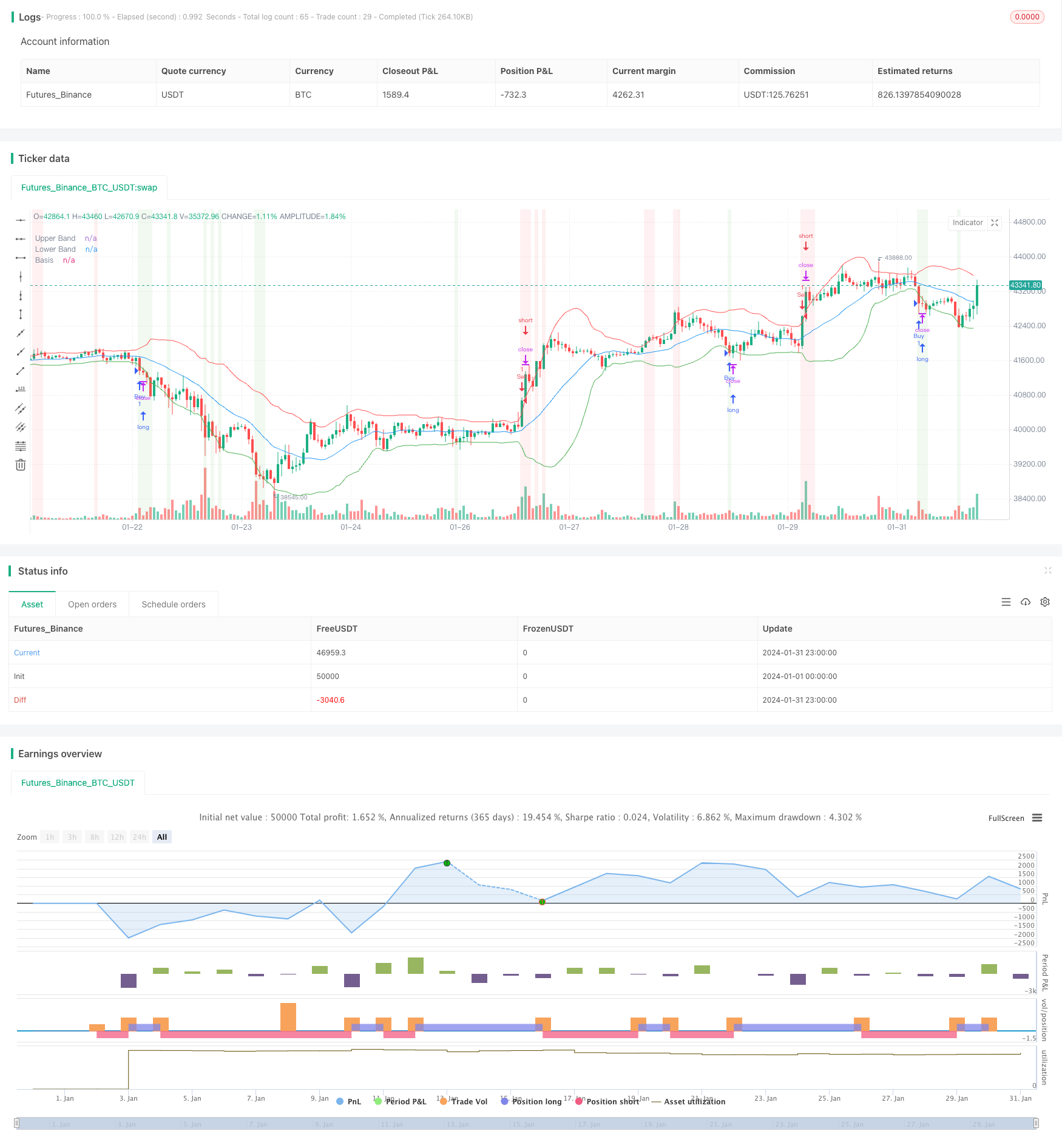
概述
布林带跟踪策略是一种基于布林带的量化交易策略。该策略通过计算某只股票的布林带上下轨,并设置买入和卖出条件来实现对市场的跟踪。当价格触碰布林带下轨时,认为股票被低估, Therefore corresponding more space for growth, thus a buying signa提出买入信号;当价格上升触碰布林带上轨时,认为股票被高估,提出卖出信号。
策略原理
该策略的核心指标是布林带。布林带由中轨、上轨和下轨三条线组成。中轨线是n天收盘价的移动平均线;上轨线是中轨线+k倍的n天收盘价标准差;下轨线是中轨线-k倍的n天收盘价标准差。k值一般设置为2。当股价低于下轨时,是比较低价位, Therefore considered to be lowervalued,提出买入信号;当股价高于上轨时,是比较高价位,认为股价被高估,提出卖出信号。
具体来说,该策略首先计算20日收盘价的移动平均线作为中轨,再计算20日收盘价标准差的2倍作为带宽,中轨+带宽为上轨,中轨-带宽为下轨。之后设置买入条件为收盘价低于下轨, 卖出条件为收盘价高于上轨。当收盘价低于下轨时,产生买入信号;当收盘价高于上轨时,产生卖出信号。
优势分析
该策略具有以下几个优势:
- 原理简单,容易理解和实现。
- 可跟踪市场走势,自动发出买入和卖出信号。
- 回撤风险相对较小,具有一定的跟踪止损功能。
- 可过滤假突破,避免在震荡行情中mistakencisisions错误操作。
- 可通过调整参数如周期、标准差倍数等来适应不同股票和市场环境。
风险分析
该策略也存在一些风险:
- 布林带并不是完美的买卖点指标,买卖信号可能滞后。
- 无法预测极端行情, black swan events like-those面对金融危机等黑天鹅事件效果可能不佳。
- 股价可能长期运行在布林带一侧,导致信号不足。
- 参数设置如周期长度需要优化,否则可能过于灵敏或迟钝。
对应解决方法如下: 1. 组合其他指标确认买卖时机 2. 设置止损止盈,控制最大损失 3. 优化参数,提高参数的适应性 4. 采用复合策略,避免单一依赖
优化方向
该策略的主要优化方向包括: 1. 优化布林带参数,如试验不同的周期长度、标准差倍数参数,fitting最佳参数。 2. 结合其他指标 filtergenerating买卖判断,如KDJ,MACD等,避免布林带滞后问题。 3. 应用机器学习算法 guide最优参数设定。 4. 利用deep learning深度学习预测股价突破上下轨的可能性。 5. 采用复合策略,设置备用交易策略, diverseavoiding过度依赖单一策略风险。
总结
布林带跟踪策略整体来说是一种较为简单实用的量化交易策略。它可以自动跟踪股价趋势,Also provide买卖信号。优点是易于实现,风险较小,能过滤假突破。但也存在一定的滞后性, black swaninability to面对极端行情的风险。该策略可以通过优化参数和指标、Using more advanced techniques如机器学习等来进一步增强。总体而言,布林带策略组合其他技术策略,能够形成稳健高效的量化交易体系。
/*backtest
start: 2024-01-01 00:00:00
end: 2024-01-31 23:59:59
period: 1h
basePeriod: 15m
exchanges: [{"eid":"Futures_Binance","currency":"BTC_USDT"}]
*/
//@version=5
strategy("Bollinger Bands Strategy", shorttitle="BB Strategy", overlay=true)
// Input parameters
length = input(20, title="Bollinger Bands Length")
mult = input(2, title="Multiplier")
// Calculate Bollinger Bands
basis = ta.sma(close, length)
bb_upper = basis + mult * ta.stdev(close, length)
bb_lower = basis - mult * ta.stdev(close, length)
// Buy and sell conditions
buy_condition = close < bb_lower
sell_condition = close > bb_upper
// Execute trades
strategy.entry("Buy", strategy.long, when=buy_condition)
strategy.entry("Sell", strategy.short, when=sell_condition)
// Plotting Bollinger Bands on the chart
plot(bb_upper, color=color.red, title="Upper Band")
plot(bb_lower, color=color.green, title="Lower Band")
plot(basis, color=color.blue, title="Basis")
// Highlighting buy and sell signals on the chart
bgcolor(buy_condition ? color.new(color.green, 90) : na)
bgcolor(sell_condition ? color.new(color.red, 90) : na)